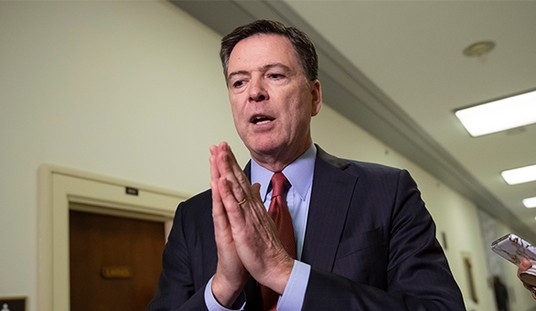WASHINGTON – The Internal Revenue Service (IRS) spends billions of dollars to collect taxes and it costs U.S. taxpayers even a greater amount to fully comply with the complexity of the U.S. tax code.
Lawmakers have long used the tax code for purposes beyond raising revenue to fund the federal government. Through special provisions in the tax code, Congress promotes a broad range of social and economic policy objectives, such as encouraging people to save money for retirement, buy a home, or buy bonds.
According to the IRS, filing taxes takes taxpayers an average of 8 hours and costs $120 for each nonbusiness return.
In total, Americans spent over 3.24 billion hours preparing and filing tax returns in 2012. Taking into consideration individual, business and employment taxes, taxpayers spent $37 billion in compliance costs that year for federal taxes alone, according to an estimate by the Tax Foundation.
Speaking at the Heritage Foundation, a group of tax experts said the complexity of the tax code hampers job creation and stalls economic growth and potential tax revenue by distorting market decisions and the allocation of resources.
Compliance costs include the tax collection costs of the IRS and the money and time individuals and businesses spend submitting tax forms. Jason J. Fichtner, senior research fellow at the Mercatus Center, said an accurate accounting of compliance costs would also include “the costs of the economic growth we’re losing,” the resources spent on lobbying to gain and maintain tax advantages, and the efficiency losses created when individuals and businesses invest in tax-avoidance activities to lower their tax liabilities.
Fichtner and his colleague Jacob Feldman looked at the costs of compliance, including the hidden costs to the U.S. economy.
They found that compliance with the tax code could cost the U.S. economy up to $1 trillion each year, including up to $378 billion in accounting costs and $609 billion in foregone economic growth.
Between 2002 and 2011, lobbyists spent $27.6 billion petitioning federal, state, and local governments, much of which was spent on efforts to protect and expand tax advantages. Although not all of this spending is aimed at carving out tax advantages, research has found that the two are related. A 2009 study found that firms that increased their lobbying expenditures by 1 percent reduced their effective tax rates up to 1.6 percentage points the following year.
Fichtner and Feldman also found out the U.S. Treasury forgoes nearly $450 billion per year in unreported taxes as a large number of people intentionally or unintentionally fail to pay the right amount of taxes.
The complexity of the tax code also creates an uneven playing field for taxpayers. Deductions benefit individuals and companies at the higher end of the income spectrum, partly because they can afford well-paid accountants and lawyers. Higher-income tax filers tend to itemize their deductions more often than those in lower-income brackets.
“We have the best system in this nation that thousands of lobbyists can design, and not the best system that economists can design,” said Dan Mastromarco, a tax attorney who has represented several Fortune 500 companies.
The IRS says it spends 41 cents per $100 to collect taxes, but the true cost is closer to $45 per $100, or $978 billion, when such factors as the accounting costs, hidden economic costs, and loss-revenue tax gaps are taken into account, Mastromarco said.
“The reason nothing has been done about this is that we’ve gotten really good at making the pain gradual – making it so that we can’t see it,” he said. “We’re effectively numb to it and that it is concentrated on a few and that those few are able to pass those costs along.”
“Our goal should be to make compliance costs measurable, understood, transparent, and painful to the American people,” he added.
According to the National Taxpayer Advocate, between 2001 and 2010 there were 4,428 changes to the tax code, averaging more than one change per day.
The code, which consists of 4 million words, is so complex that even the IRS struggles to meet taxpayers’ needs. Mastromarco said the National Taxpayer Advocate, the office tasked with helping taxpayers resolve problems with the IRS, was unable to get answers to many of the questions submitted to the agency.
In 2012, the IRS answered only 68 percent of the 115 million phone calls it received. The U.S. Treasury inspector general’s 2011 semiannual report to Congress found that most taxpayers who contact the IRS do not receive helpful responses to their correspondence.
“We really haven’t made this very clear to the American people,” he said. “They don’t see it. They don’t feel it. They don’t understand what this equates to – this is a huge amount of money. This is a good year of economic growth. This is beyond the GDP of many of the world’s countries.”
Pete Sepp, president of the National Taxpayers Union, said reforms are needed to make it easier for taxpayers to pay their taxes and minimize intrusion from the IRS.
As an example, he suggested a quadrennial simplification process, modeled after the Defense Base Closure and Realignment Commission (BRAC), which would include volunteers from the tax-expert community to “sift through the code, take out the most egregious provisions in need of simplification and present it to Congress.”
Sepp said any tax reforms should also include protections that ensure taxpayers are treated fairly and are not excessively burdened by the IRS.
“Congress can take steps now to ensure that taxpayers not only have rights but remedies,” he said.









Join the conversation as a VIP Member